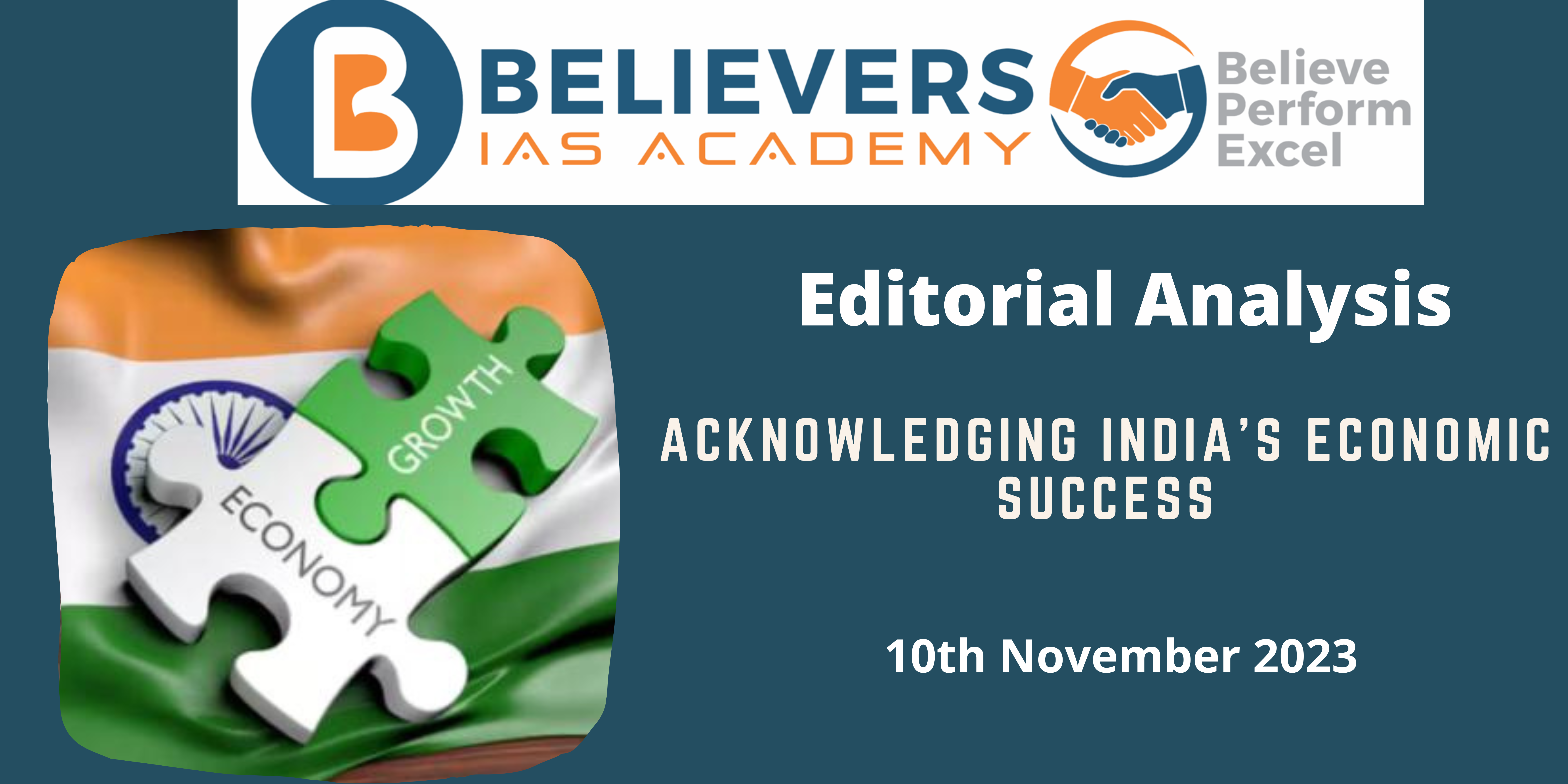Acknowledging India’s Economic Success
Context:
The descriptor ‘fastest-growing major economy’ gains significance, particularly considering India’s scale and the challenges posed by the global pandemic.
Extra Information:
1. India’s Global Economic Standing: India, currently the fifth-largest economy globally, is projected by the IMF to secure the third position by 2027.
2. Growth Rates and Post-COVID-19 Era: Some debates focus on using compound annual growth rates, measuring progress despite the pandemic, while others argue for pre-COVID-19 estimates.
Relevance:
GS – 3 (Growth & Development)
GS – 2 (Government Policies & Interventions)
Prelims:
Gross Domestic Product (GDP), Global financial crisis of 2007-08, Appreciation of rupee, GST, Corporate tax cuts, Insolvency and bankruptcy code, Production-linked incentive scheme, National infrastructure pipeline.
Mains Question:
Assess the economic trajectory of India post-COVID-19, considering factors like government measures, inclusive growth initiatives, and the impact on poverty alleviation. (150 words)
Dimensions of the Article:
- Economic Challenges Post-COVID-19
- Government Measures Since 2014
- Challenges and the Road Ahead
Economic Challenges Post-COVID-19:
- The aftermath of the global financial crisis in 2007-08 impacted India’s economy, with a slowdown in world trade and a burst in the domestic credit bubble.
- High leverage, frequent defaults, and elevated real estate prices led to lower investment rates.
- The economy has seen stark variations in and around. It fell sharply, recovered modestly, slowed severely, and experienced a dead cat bounce from late-2022.
Government Measures Since 2014:
- The government implemented several measures post-2014 to rejuvenate the economy, such as calibrated economic liberalization, the introduction of the Insolvency and Bankruptcy Code (IBC), demonetization in 2016, and the Goods and Services Taxes (GST) in 2017.
- These initiatives aimed to foster private corporate investment and strengthen the economy.
- In FY22, a substantial Capital Expenditure (Capex) program was initiated, supplemented by resource support to State governments. Central government Capex rose from 1.6% of GDP in FY19 to 2.7% in FY23, aiming to stimulate private corporate investment. The focus on improving physical infrastructure intended to attract private investment, which demonstrated a robust increase in FY23.
- The government’s commitment to Sabka Saath Sabka Vikas reflects its emphasis on inclusive growth. Poverty alleviation measures and rural welfare initiatives have contributed to lifting millions out of multidimensional poverty, particularly in rural areas. Progress in indicators related to basic amenities and health signifies tangible improvements in rural living standards.
- Government support for agriculture has led to unprecedented growth rates in fruits, vegetables, dairy and livestock products, and fisheries. The share of fruits and vegetables in the food basket has increased, and the country’s food basket is more nutritious. Agriculture’s substantial contribution to the agri-food sector showcases positive strides in nutritional aspects.
Challenges and the Road Ahead:
- India, with its large population and per capita GDP of nearly $2,400, acknowledges the long journey to achieve high-income status and an elevated quality of life for its citizens.
- Recognizing successes and addressing shortcomings will enhance the quality of public discourse in alignment with India’s economic progress.
- Continued emphasis on economic reforms, inclusive growth, and sustainable development practices will contribute to India’s ascent as a major economic force.
- Acknowledging achievements and addressing challenges collaboratively will foster a constructive environment for sustained growth.




